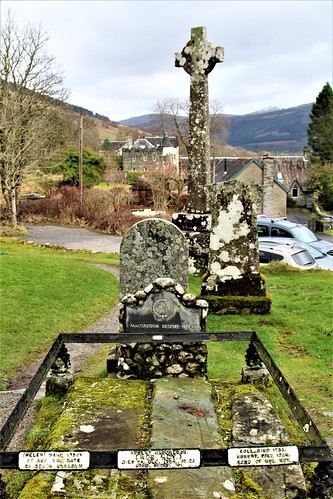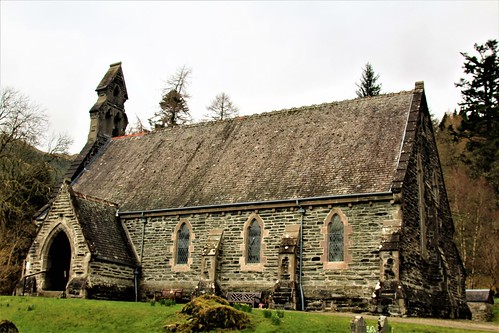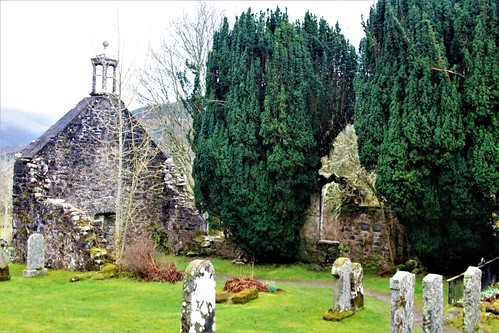The Curious Case of Rob Roy MacGregor's Burial Place
(Above image is a capture of the Rob Roy family burial site.)
This post is a continuum of that of March 2nd., relating to Scottish legend, Rob Roy MacGregor.
Until yesterday, it had been my understanding that Rob Roy was buried in a family plot in the burial ground at Balquhidder parish church following death of natural causes.. No great deductive skills are required as there is metal signage at the family plot stating that the location is Rob Roy's final resting place.
However, yesterday I visited the burial site and discovered an information board had recently been erected which suggested the actual burial place was elsewhere.
Background
As will be evident from the images herein there are two churches on the site, viz:
- Ruins of a 13th century, Roman Catholic church, in front of which is the MacGregor burial plot.
- Current Parish Church or Kirk (Presbyterian) which dates from the 19th century.
Rob Roy (born 1671) had returned to his native lands in Balquhidder Glen to spend the latter years of his life. In 1734 Rob Roy engaged in a dual (apparently a sword fight) with his neighbour John MacLean to settle a land dispute.(Clearly, no need for expensive lawyers in those days!). Rob Roy died on December 28th 1734 as a result of wounds incurred in the fight.
The whereabouts of Rob Roy's burial place is now uncertain. The church records are silent on death and burial whilst the Caledonian Mercury (newspaper) of Jan 9th 1735 reported the death but not the funeral. Whilst Rob Roy probably had a strong local following he was persona non grata with the establishment, the local MacLean clan and local land owner, the Duke of Montrose. He had avoided deportation by a whisker. Possibly, his family and local community wished to keep the burial a low key, private event.
The inscription on the burial plaque also refers to the Rob Roy's wife and two youngest sons. It is considered unlikely that son, Robert, alias Robin Oig, is buried there because he was hanged in Edinburgh for abduction and manslaughter with his crime being the shooting of John MacLaren in the back. Presumably, the murdered John MacLean was responsible for the death of Robert's father.There is another dimension here in that the local MacLeans viewed the Balquhidder churchyard as a quasi private burial place and, for reasons adverted to above, would be unlikely to be receptive to having MacGregors buried there, especially those of the Rob Roy family.
There are three further aspects to consider in regard to the actual burial place, viz:
- The flat, recumbent stones lying atop the grave are from an earlier era, possibly around the 1400s, and have probably been re-cycled from elsewhere in the extended site.
- The railings, headstone and metal plaque probably date from the 19th century. It is noted that Queen Victoria visited the grave in 1869, a date which would tie in nicely with the 'embellishments'
- In 2009 it was reported that the Chief of Clan MacLean wished to exhume the bodies and undertake DNA tests to prove or otherwise that the remains are those of Rob Roy. Such exhumation was resisted by Clan Gregor and there are no reports of the exhumation having taken place.
Alternative candidates for place of burial include:
- The MacGregor family's traditional burial site on the island of Inis Cailleach on Loch Lomond.
- Rob Roy's birthplace at Glengyle, near Loch Katrine.
Balquhidder Parish Church today (Presbyterian).
Ruins of old, 13th century church (Catholic)





Comments
Post a Comment